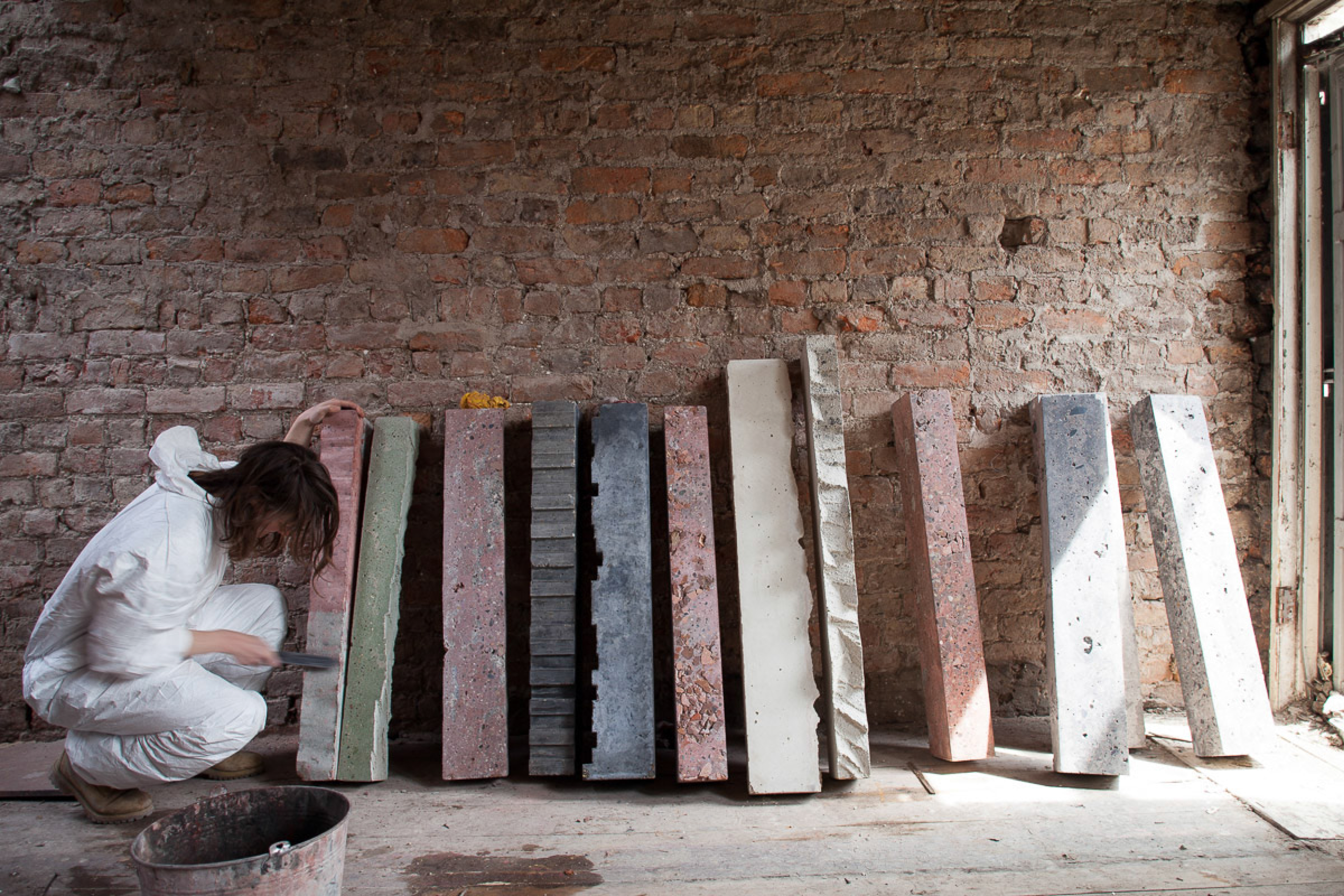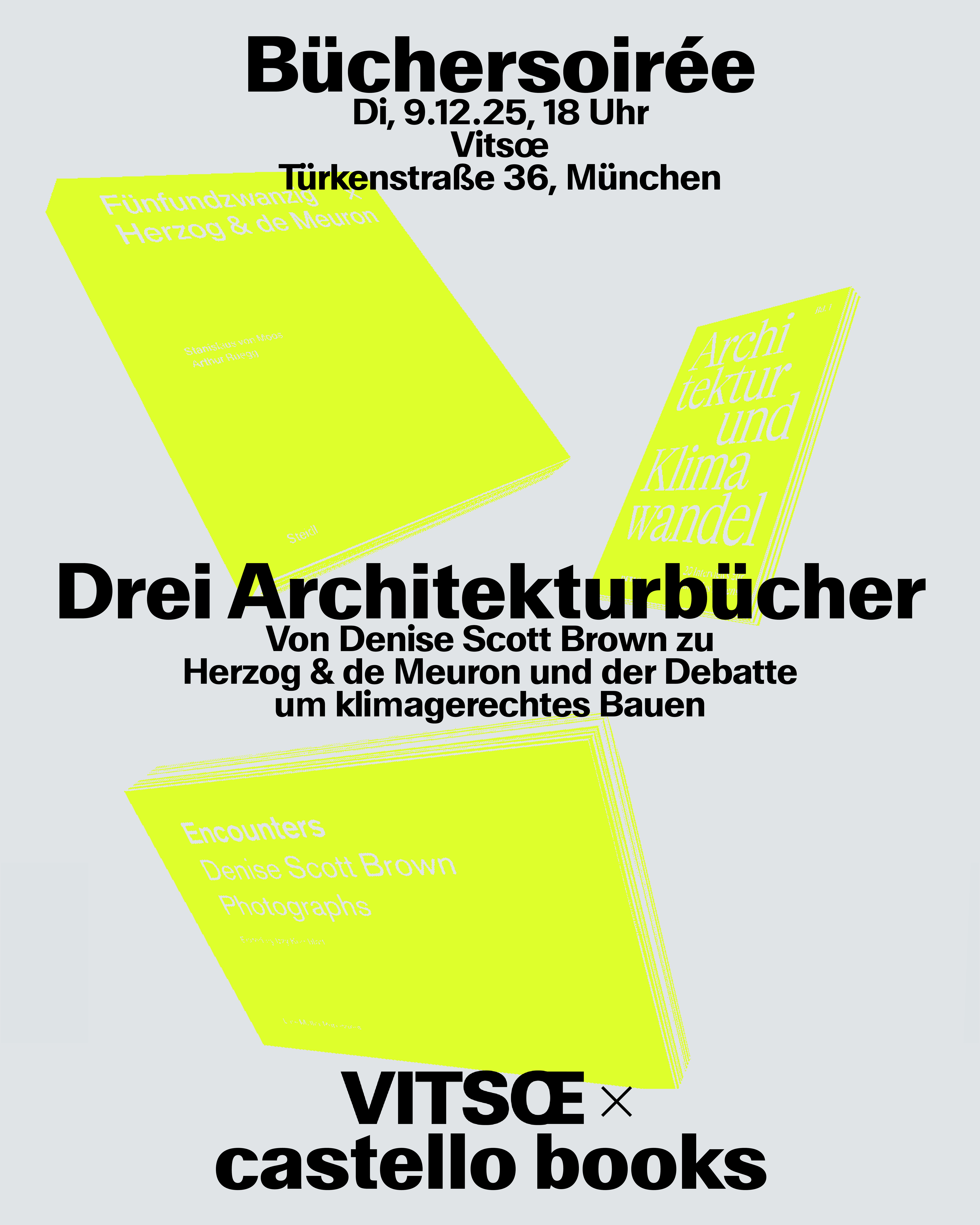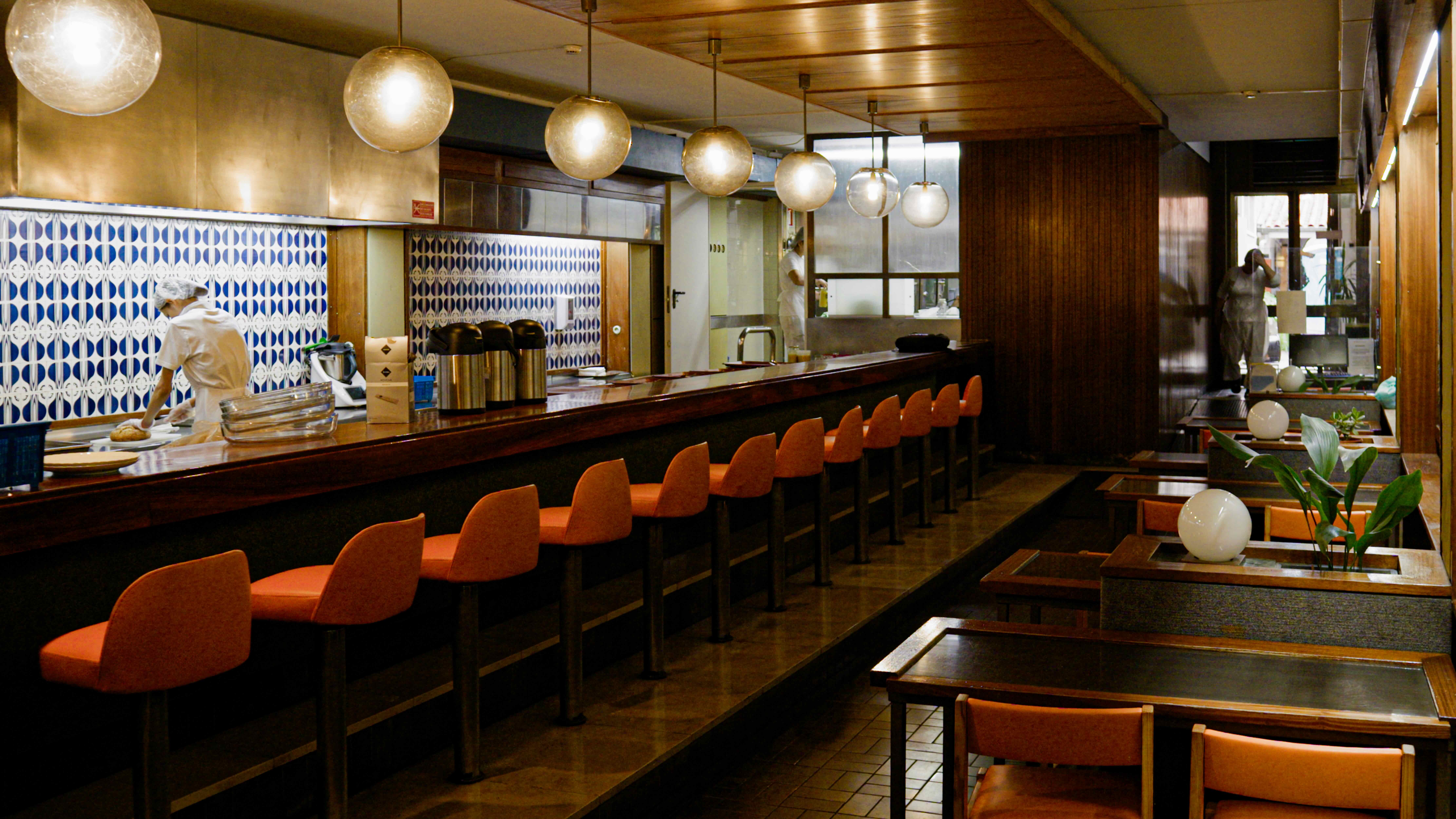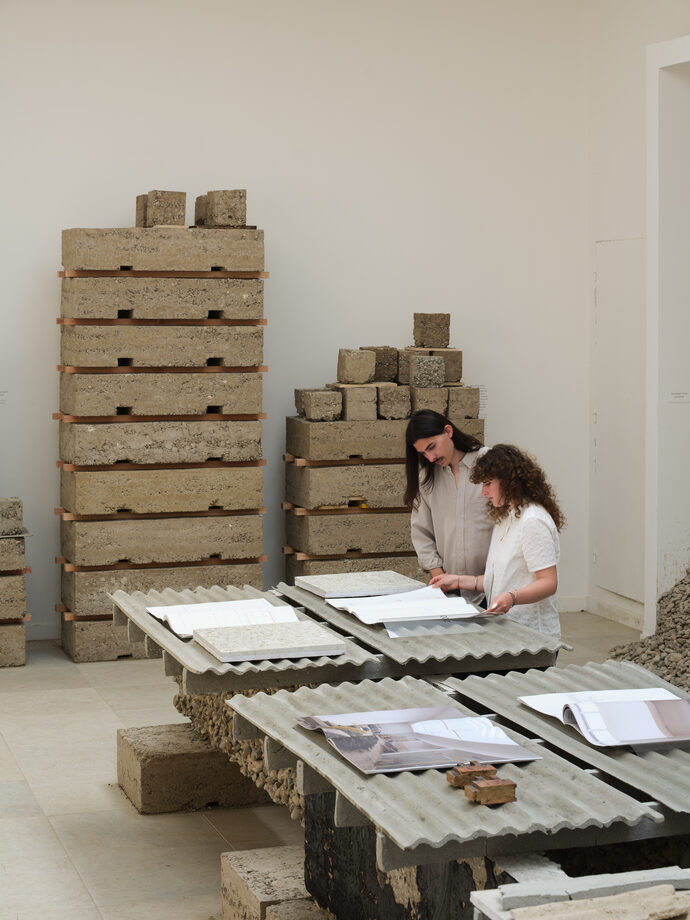In conversation with Peter Haimerl
On-site meeting in Haidhausen, Munich. Peter Haimerl's studio is hidden between galleries and art workshops. The Munich architect and his staff work in a large space with tall windows - on bespoke architectural projects for their clients. And they also concoct their own non-commissioned visions. For example, their idea for a future which they have called "Zoom Town": An open platform of networked transport systems, open spaces and building structures programmed according to parametric principles. But this is not all: In a network composed of various metropolises Zoom Town condenses into an urban European future vision with clear ideas about mobility and energy consumption. The premises of this city model are clearly described: Right from the start it should offer well-being without growth and convince through attraction rather than restriction. Sandra Hofmeister spoke with Peter Haimerl on the necessary transformation of city landscapes, possible forms of future mobility and the role architects play in this process.
You have been interested in the transformation of urban centers for some time now. How did the Zoom Town project come about?
Peter Haimerl: I am of the opinion that we cannot progress further with current urban planning. Natural organisms, such as the primeval forest, function as stable internal systems without additional energy supply or growth. We, on the other hand, remain dependent on growth in order to spark further development. Strangely enough, we continue to introduce increasingly refined technologies without first solving the fundamental problems. And consequently our cities continue to be marked by a sharp development differential, high city budget deficits and inadequate concepts for energy supply. Last but not least, I am convinced that we are not using available resources efficiently enough. Transport, for example, is not becoming smarter but is merely expanding on an additive basis. This is the only way we can explain the increasing numbers of parallel transport systems - of planes, trains and cars - without ever coordinating them with one another.
What consequences do you think this has for the energy budget?
Peter Haimerl: Every system in itself already consumes too much energy. Cars are actually much too heavy. In my opinion the energy airplanes consume for distances less than 2,000 kilometers is really absurd. And we recognized a good 20 years ago that the existing transport systems were not networked with one another.
Is this the starting point for your Zoom Town project which proposes a new type of city and city planning?
Peter Haimerl: Our core idea with Zoom Town was to create an open platform which has the task of networking existing transport systems and technologies more intelligently.
Energy and transport systems form the backbone of cities - to what extent does Zoom Town take this into consideration?
Peter Haimerl: This problem can be seen in cities in the way they are constructed and organized. The predominant structure is that of streets and blocks. Urban planning is dominated in visual terms by the mobility infrastructure. This impact on society in a variety of ways. For example, we have to pay for the energy we require for this infrastructure. At present, this functions by amassing debts which, in turn, has an effect on the communities. The planning measures are basically too individual and increasingly inflexible.
As an open platform Zoom Town also plans to utilize the synergy effects created by networking? How does this function?
Peter Haimerl: In order to form a basis for discussion we have presented a starting model which can be improved upon later. Zoom Town suggests a radical restructuring of the urban space. One central level is mobility, but the project also focuses on other areas such as planning levels and the co-determination of citizens. But to return to mobility. We believe that there is an urgent need to initiate a development for urban individual transport which uses considerably less energy per person, takes up less space, thereby creating more space in the city for new networking possibilities. The classic street axes would no longer be necessary in Zoom Town because there would be no cars.
Nevertheless you have not excluded individual mobility in Zoom Town - how exactly is it organized?
Peter Haimerl: Our concrete suggestion is to have a means of transport which requires little space and does not travel at more than 30 km/hour. With this means of transport, what we call "Floaters", you can climb into an overriding train system and travel within the city or to the next metropolis. In other words there are the city's static transport platforms and an additional dynamic network platform with high-speed trains which we call Zoomliners. Ideally, these Zoomliners are spread over the whole city with a network of stations. The cities would thus be ideal for passenger traffic, you could travel between urban centers without having to change trains. You could start in your living room with a Floater and arrive in a living room in Madrid.
So every person would need a Floater.
Peter Haimerl: We have also developed a model which can carry more than one person. But basically the size of the floater is small - it is not a passenger car but more like a "Segway", that is, an electric scooter that provides mobility across a radius of 1.5 km. In combination with the Zoomliner this would make other transport methods obsolete, even the U-Bahn and cars could be reduced and converted. The underground rail network would be reserved for transporting goods and thus produce no noise or emissions on street-level.
What new opportunities would this produce for the city?
Peter Haimerl: Without goods transport and cars there would be a lot of free space for recreational parks, residential houses and new production settlements. I consider this essential. At the latest when today's developing nations become independent we will once again have to focus on regional production. The underground system under the city and the overground Floater and Zoomliner system will provide the logistics structure that serves the transport of both passengers and goods. Production facilities in Zoom Town will thus be rightly positioned in the cities - unlike today when they depend on being located in a harbor area or near an autobahn connection.
If we extrapolate this further, how would the face of cities change?
Peter Haimerl: For one thing the city would become dynamic again like virgin territory with unbuilt areas able to be developed in the future. For another, a different spatial situation would be conceivable as the city would be considerably quieter. Suddenly you could have living, shops and production anywhere you wanted - that would be an ideal starting point for diverse urban planning, something not possible in the current urban monocultures. And you could introduce parametric planning methods which would take this system into account. And finally, no fixed axes would have to be planned for this vision, it would have more to do with processes and possibilities. The planner would be a sort of simulator who represented and examined certain flows like on a weather chart to determine what interventions were appropriate. This is a completely new type of planning and realization.
Your suggestion is not exactly designed to be realized overnight. But all the same, have you thought about what steps would be necessary to move Zoom Town along in that direction?
Peter Haimerl: You may find this hard to believe, but in my opinion Zoom Town could be realized any time. To achieve this we have made a number of assumptions: One of these is that the project can begin without the prior installation of a gigantic new infrastructure network. In principle, Floaters are already around in the form of bicycles or Segways, rapid transport systems also exist as train routes which could be expanded piece by piece. The potential for development already exists, but must be used intelligently and with foresight. Our second assumption is attraction instead of restriction. It is not about forbidding cars, rather about presenting attractive alternatives. Ideally you simply need to get started. Independent European committees could agree on firm steps and produce a sort of program which can develop freely or in a controlled manner. Of course politics has to be behind it from the start to clarify and organize the beginnings with a few network starting points.
You have been working on the Zoom Town idea for some time now and have also cooperated with the Crafts Council in Braunschweig and the Institute for Transportation Design. How did this come about?
Peter Haimerl: Zoom Town is a city model - students from Stefan Rammler's class in Braunschweig have developed various Floaters for this model. In the process they quickly came up with new aspects - such as institutionalized vehicles for police and fire brigade. They used the potential for a new urban space in their designs and in so doing followed our third premise of well-being without growth. For me this is the real core of Zoom Town. All the energy which we invest in the urban system has to be calculated in such a way that we do not spend more money than what comes in. Only in this way will these systems pay off in the short term and without additional growth. At present, urban planning is conducted without a comparable concept of effectiveness as regards both residential buildings and transport infrastructure are concerned. Otherwise there would be no single-family homes which consume far too much energy. As costs can only be covered by investments, cities for example, continuously put out tenders for commercial districts. They require money for financing and for maintaining existing measures. Sooner or later however, this system will only function if the population continues to grow. Yet our population is declining. There is thus an urgent need to streamline, consume less energy and use facilities for multiple purposes.
There are many historical concepts for the ideal city, most of them are considered to have failed. Does your project perhaps also aim in the direction of approaching overall planning issues in spite of these failed utopia?
Peter Haimerl: We are concerned with finding a way to present a large European metropolis. We purposely have not described a concrete image of this metropolis, just established impulses and rules for utilizing networks. The difference to most ideal city fantasies - from Le Corbusier to Yona Friedman - is that we prioritize the process over the image. I am not at all interested in changing cities formally, historically formed cities should remain so, we want to build upon them.
How will things now proceed with Zoom Town?
Peter Haimerl: For some time now city utopia are noticeably once more a topic of discussion. We hope that Zoom Town will play a role in this context. Architecture has the great opportunity of offering solutions for the future and sparking incentive for how efficiently you can deal with space and time. Herein lies great historically-determined potential in Europe.
Text: Sandra Hofmeister




